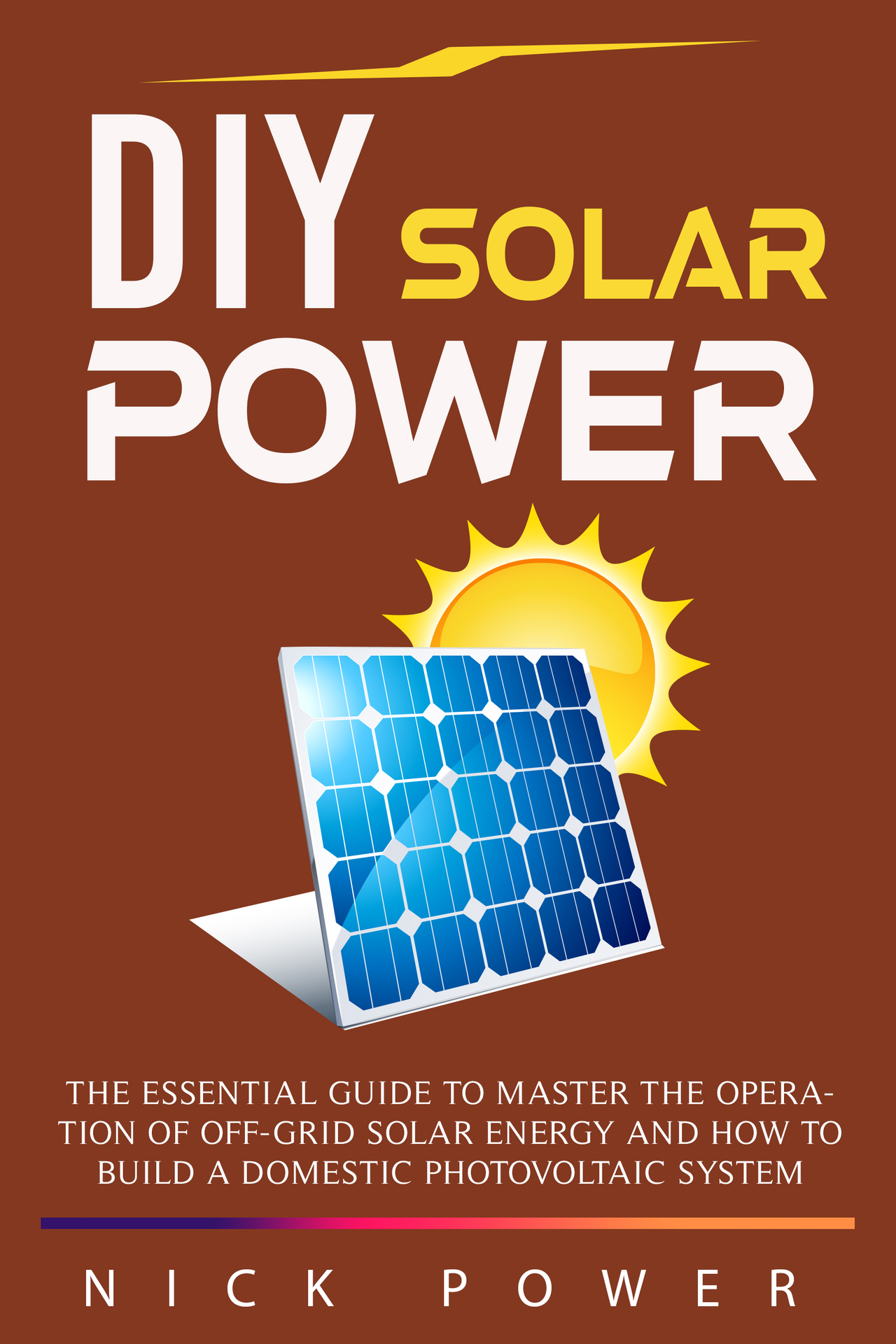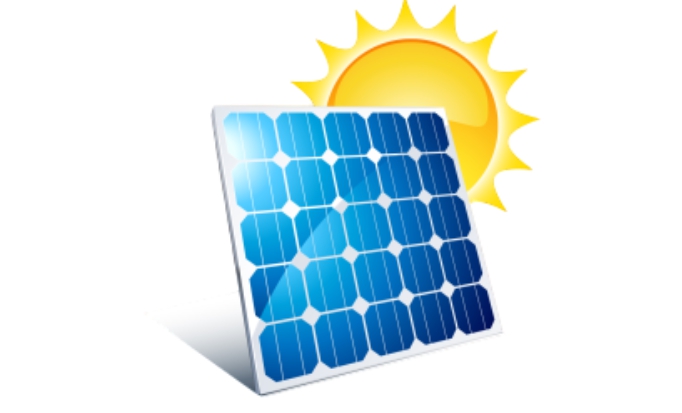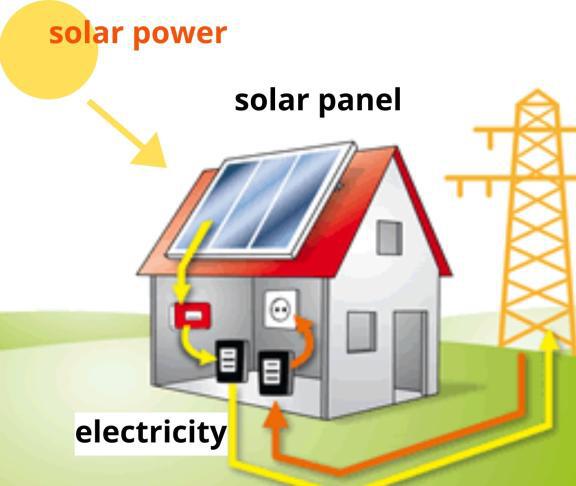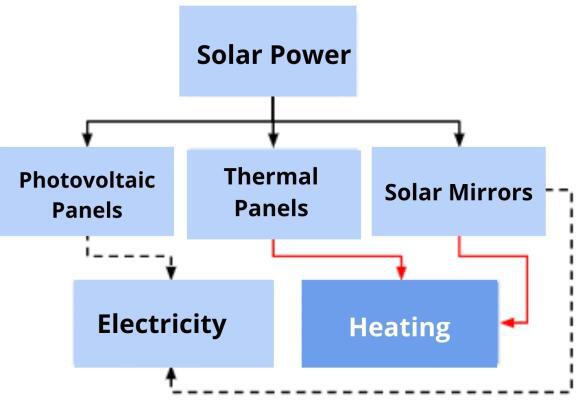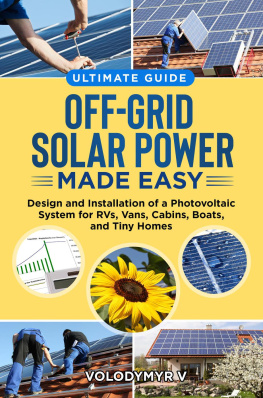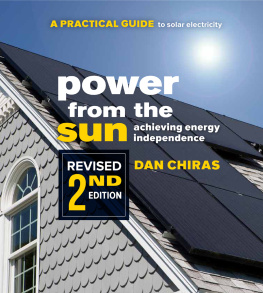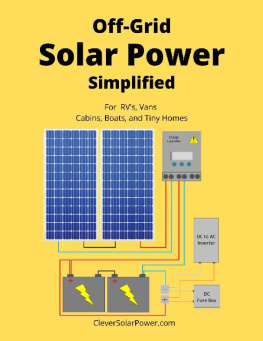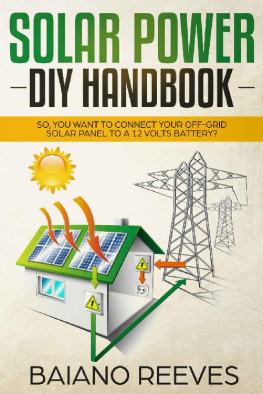DIY Solar Power
The Essential Guide to Master the Operation of Off-Grid Solar Energy and How to Build a Domestic Photovoltaic System
Copyright 2020 by Nick Power
Copyright 2020 by Nick Power- All rights reserved .
Except for no commercial uses as permitted under US copyright law, no part of this publication may be reproduced, distributed, or transmitted in any form or by any means, including photocopying, recording, or other electronic or mechanical methods, without the prior written permission of the publisher, except in the case of brief quotations embodied in critical reviews.
This Book is provided with the sole purpose of providing relevant information on a specific topic for which every reasonable effort has been made to ensure that it is both accurate and reasonable. Nevertheless, by purchasing this Book, you consent to the fact that the author, as well as the publisher, are in no way experts on the topics contained herein, regardless of any claims as such that may be made within. As such, any suggestions or recommendations that are made within are done so purely for entertainment value. It is recommended that you always consult a professional prior to undertaking any of the advice or techniques discussed within.
This is a legally binding declaration that is considered both valid and fair by both the Committee of Publishers Association and the American Bar Association and should be considered as legally binding within the United States.
Any use, correct or incorrect, of the provided information will render the Publisher free of responsibility as to the actions taken outside of their direct purview. Regardless, there are zero scenarios where the original author or the Publisher can be deemed liable in any fashion for any damages or hardships that may result from any of the information discussed herein.
Additionally, the information in the following pages is intended only for informational purposes and should thus be thought of as universal. As befitting its nature, it is presented without assurance regarding its prolonged validity or interim quality.
Trademark notice: Products, companies or corporate names referenced in this book may be trademarks or registered trademarks, and are used only for identification purposes without any intent to infringe upon the rights of the trademark holders.
Congratulations on purchasing this book and thank you for doing so. This guide has been specially designed for those who want to learn how solar panels work (thermal and photovoltaic) and how to build DIY home photovoltaic systems in a simple and professional way in compliance with the law.
Nick Power
Table of Contents
INTRODUCTION
Solar energy is, quite simply, the energy that comes from and is collected by the sun, and is the primary source of energy on the whole planet. It is a type of energy that runs on flow, not on stock, and therefore its continuous use does not diminish its availability in any way.
The ancient Greeks and Romans used mirrors to reflect light from the sun, concentrating its power to make fire and light torches. It is even claimed that the Greek scientist Archimedes used mirrors as a tool of war, concentrating the sun with enough strength to set fire to besieging Roman ships. These are examples of human ingenuity used to capture the power of the sun.
In addition, solar energy is the source of all other energies available in the world such as wind, fossil fuel, wave, hydroelectric, biomass, geothermal and tidal energy. It is a renewable, available, inexhaustible and clean source, thanks to the enormous amount of energy released by the sun every day. Solar energy is collected and used to produce electricity (through photovoltaic solar panels) or thermal energy (through solar thermal energy). There are three ways in which energy from the sun can be converted: solar photovoltaic, solar thermal and solar thermodynamic.
In this book we will obviously talk a lot about the electricity generated by solar energy and its uses, but we will deal with both concepts of solar electricity and passive solar, as both are useful for different types of projects and circumstances.
CHAPTER 1: What are Solar Panels?
Solar panels transform solar energy into useful human energy, heat or electricity. Although similar on the outside, there are different solar panel technologies. The source of energy is always the same, solar energy, but some panels are useful for heating domestic water while others for the production of electricity.
The types of solar panels
The main types of solar panels are the following:
Photovoltaic solar panels. These panels convert the sun's rays directly into electrical energy. The owner of the photovoltaic panels consumes self-produced electricity for domestic use or sells it to the national grid.
Solar thermal panels (solar collectors)
They use the heat of the sun's rays to heat domestic water and produce hot water for domestic use in the bathroom and kitchen (e.g. washing dishes, showering, etc.). They are an ecological substitute for the electric water heater and gas boiler.
Concentrated solar panels. This technology uses parabolic mirrors to reflect the sun's rays and concentrate them in a single focal point that becomes particularly hot. This is the principle of Archimedes. The heat in the focal point can be used to heat a heat transfer fluid or a water tank, to cook food or to generate steam and thus electricity.
CHAPTER 2: How the Solar Thermal Panel is Made and How it Works
The solar collector (or solar thermal panel) consists of a radiator/absorber - usually made of a metal such as copper, with good conduction capacity - which is able to absorb the heat of the sun's rays and transfer it to the water tank.
The operating principle of a solar thermal panel can be compared to what happens in a greenhouse. Of the incident sunlight, only a small part of the glass surface is reflected, the remaining part passes through the glass and is absorbed by a black capturing plate. This plate warms up and puts energy back into the form of infrared radiation, with respect to which the glass behaves as if it were opaque, thus keeping it inside (greenhouse effect). In this way the temperature of the primary vector fluid tends to heat up. From that moment the liquid moves in the coil towards the tank according to three different types of circulation: natural, forced or emptying.
The insolation depends on the cloudiness and the orientation of the panel with respect to the sun and a panel receives more solar energy when it is oriented directly towards the sun. The fixed panel provides the best yield when facing south and is inclined 10 degrees less than the latitude of the place if it has to produce hot water, 10 degrees more if it is used for heating. The United States is a country with a good level of radiation, on average 5-6 kwh/sqm/day.
Types of Collector
The quality of the collector depends on the efficiency, i.e. the ability to convert solar energy into thermal energy. In technical terms, the efficiency of a solar collector is defined as the ratio between the energy (energy density) absorbed by the heat transfer fluid and the energy (solar energy density) incident on its surface.

